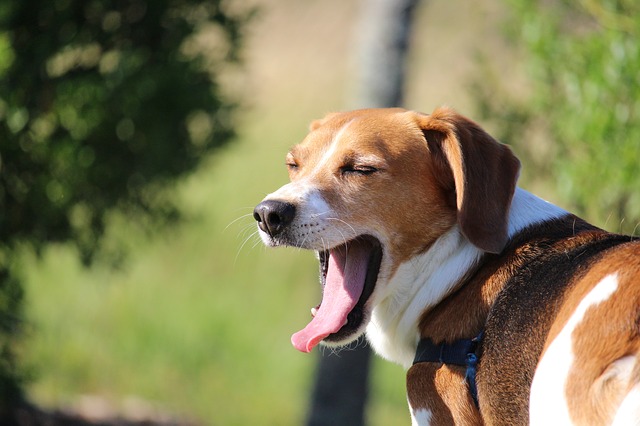When woofs fail, dogs use body language as their main form of communication. Between all the tail wags and head tilts, there’s a special category of behaviors canine experts refer to as “calming signals.”
A Norwegian canine ethologist first coined the term after observing dogs using specific behavioral signals to communicate their feelings of stress and to shut down potential aggression. It’s a dog’s method of resolving conflict and making friends in potentially high-strung situations.

Know What to Look For
Keen observation is all you need to recognize canine calming signals. Pay close attention in the first few moments when your dog approaches another dog, person, or animal. Here’s a list of the most commonly seen calming signals.
- Head turning
- Averting gaze
- Lip licking
- Yawning
- Blinking
- Getting low to the ground
The goal behind each behavior is to ease the situation into a calm and peaceful interaction.
A Dog’s Thought Process
When you and your pup are out on a walk and come across another dog, your dog may demonstrate any of the calming signals to tell the other dog they come in peace. In the canine thought process, showing one, two, or several calming signals in succession is the polite thing to do before moving forward with the introduction. It’s a gesture of good will and meant to show good intentions.

Not every canine interaction will include calming signals, however. If neither of the dogs exhibits signs of aggression, they might walk up to each other casually, sniff noses, and go about their business. But if an unfamiliar dog walks directly toward your dog, maintains eye contact, and does anything else that could be interpreted as threatening, your dog will use calming signals in an attempt to divert the perceived aggression.
You might also notice your dog exhibiting calming signals during playtime. If the play gets too rough, your pup might move to the side and turn their head to signal they’re starting to feel stressed. What your dog considers to be “too much” will depend on their personality. Some dogs are overtly confident and comfortable in nearly all kinds of interactions, and others are more cautious.

There doesn’t even need to be another dog around for your pup to start using calming signals. The same guidelines apply for when a dog meets a new person or is in an uncomfortable situation. A common example is seeing your dog yawn or lick their lips while at the vet’s office. They’re not telling you they’re tired or hungry, they’re telling you the vet makes them nervous and they want to diffuse the situation.
Using Calming Signals Yourself
Now that you know what calming signals are and what they do, you can use them to better communicate with your dog and any other dog you encounter. When approaching a nervous dog, never do it head-on. Go toward them at an angle, and keep your head turned away. You’ll feel silly, but you can also let out an exaggerated yawn and lick your lips. If you commit to the actions, you’ll essentially be speaking the dog’s language and telling them you’re not interested in a fight.
